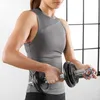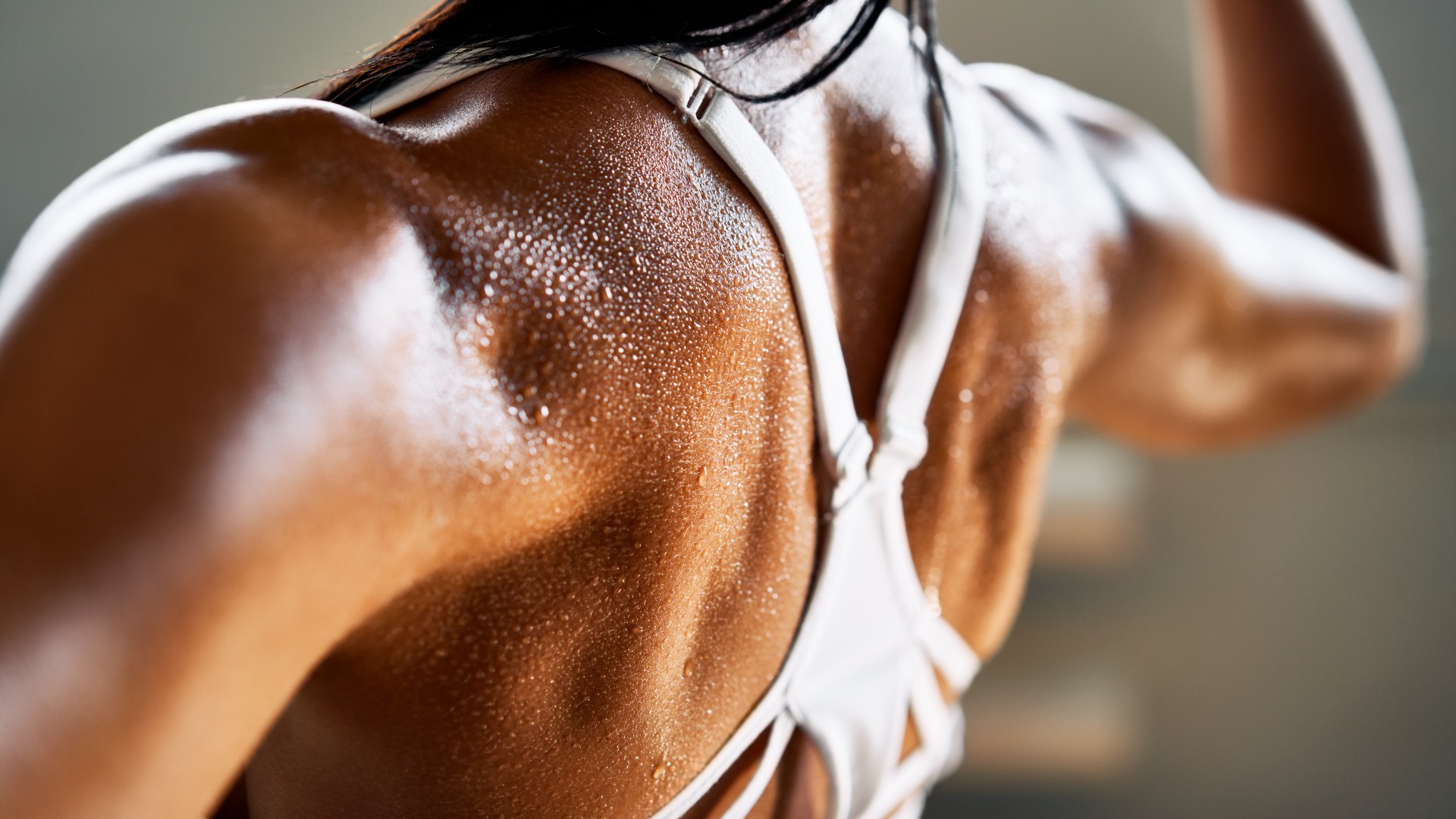
Use these five dumbbell exercises to build your back and biceps muscles without a pull-up in sight. We know there are plenty of pull-up variations you can try to suit your current ability if you don't have kipping or strict pull-ups locked down, but you won’t need to think about your technique on the bar to try these dumbbell back and biceps exercises.
We’ve only selected five moves, but between them, they hit multiple upper-body muscle groups and help strengthen your core. That means you can be efficient without rolling through hours in the gym, and by slowly adding volume and overloading your muscles over time, they should help build leaner muscle mass and improve strength.
We recommend a set of the best adjustable dumbbells — you might find you can lift heavier weights when loading your larger and more powerful back muscles compared with your smaller biceps — but otherwise, choose two sets of weights or a medium weight if you only have one set.
What are the 5 dumbbell exercises for your back and biceps?
The back and biceps combination makes a lot of sense because the pulling motion initiates activation in both to create movement. Naturally, gym-goers target them together, possibly alongside chest and triceps pushing motions, for a complete upper-body workout.
Unless you plan to build maximal one-rep max-type strength (in which case, barbells may become your new best friend in the weights room because you can load much heavier), dumbbells are brilliant at increasing the range of motion of each exercise, challenging your smaller stabilizing muscles to support the movement pattern of the weight and helping you to recruit the left and right sides of your body together. If you want to focus your attention on just a few muscle groups and hit them hard, here’s how.
Typically, you’ll perform a mix of compound and isolation exercises, saving the isolation moves for last to tire out those supportive biceps that assist during the “big lifts.” So if you’re new to programming, hit the compound first and save your isolation exercises for last.
Bowflex SelectTech 552 Adjustable Dumbbells: was $549 now $375 @ Amazon
The SelectTech 552 are among the best adjustable dumbbells for working out at home. They can be adjusted from 5 to 52.5 pounds by simply rotating the dials on each dumbbell. We found they're easy to adjust between sets, have a comfortable rubberized grip, and come with some handy storage trays, complete with a safety strap.
1. Dumbbell dead row
The dumbbell dead row increases your range of motion as you lift the weight from the floor each rep. It’s “easier” to do with kettlebells but you can still use dumbbells, just be sure that your form is on point and you’re not hunched over or rounding your back. Row the dumbbells up as high as possible, ensuring the elbows drive past the back, and use a neutral grip with palms facing each other.
Get instant access to breaking news, the hottest reviews, great deals and helpful tips.
The row primarily hits the lats (those wing-shaped muscles that run down the sides of your back), the midback, the biceps and traps, also developing power.
How:
- Start with your feet hip-width apart and position your dumbbells on either side of your feet
- Engage your core, hinge forward at your hips and send your bum backward
- Maintain a flat back and neutral spine and look slightly ahead of your weights
- Grip the dumbbells using a neutral grip, then pull the dumbbells toward you, driving your elbows toward your hips and slightly lifting your chest
- Pause, lower the weights to the floor, reset and go for the next rep
- 3-4 sets of 8-12 reps.
2. Dumbbell incline row
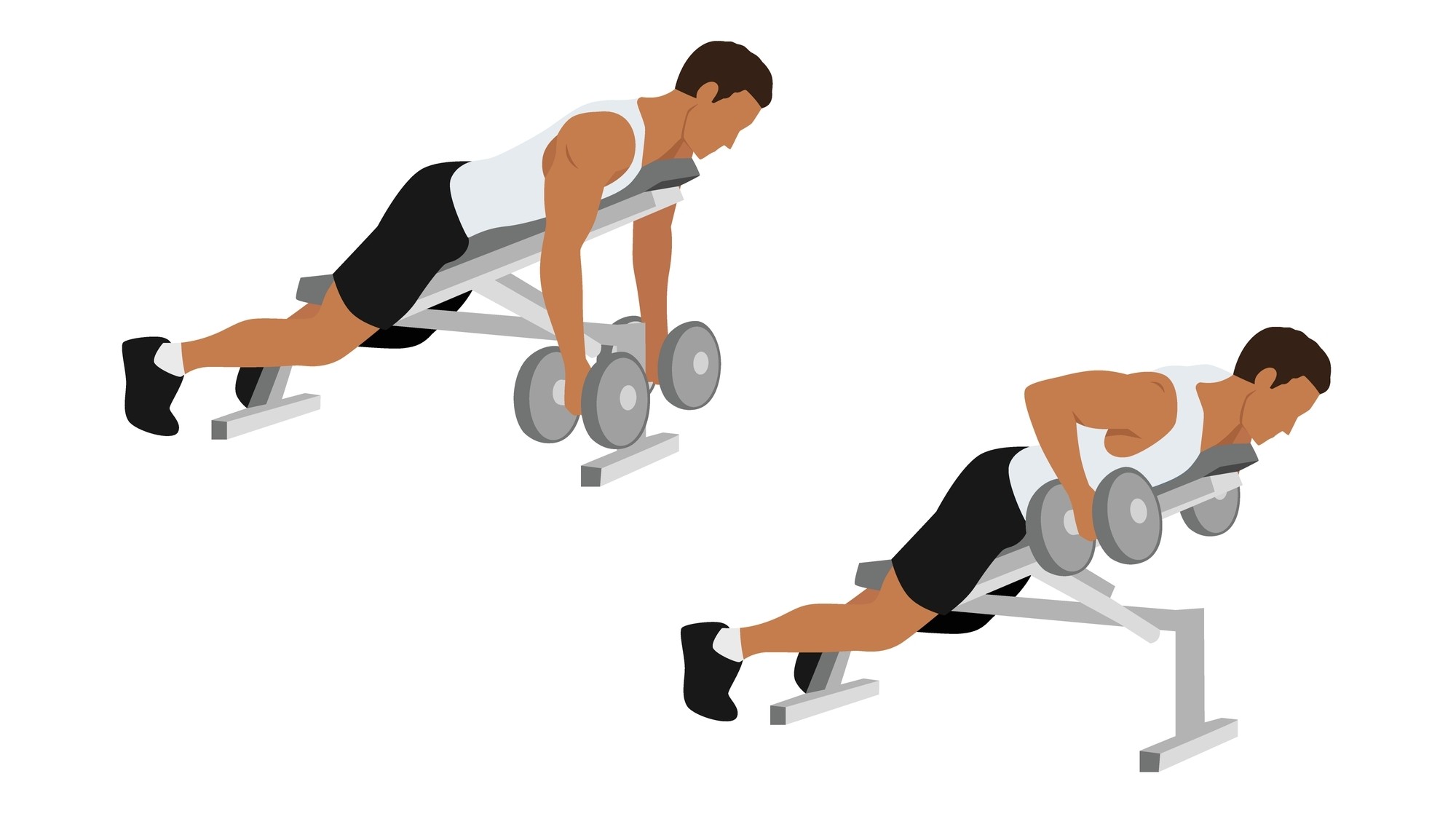
Supporting your torso using a bench will force the body to adopt a strict row, meaning you can’t rely on momentum to drive the weights. The incline angle of the bench will also help you hit the lower lats while naturally engaging your biceps to assist with the movement.
How:
- Sit on a bench on a 45-degree incline with your chest resting against the back
- Your chin should sit over the bench, so either position your feet on either side of the bench on the ground or kneel on the bench instead, with your thighs and chest resting on the bench
- Squeeze your glutes and stomach and hold a dumbbell in each hand, allowing your arms to hang on either side of the bench
- Set your back and shoulders, squeeze your shoulder blades together and pull the dumbbells toward your chest
- Pause at the top, then lower the weights to the starting position
- 3-4 sets of 8-12 reps.
3. Supported dumbbell rear delt fly
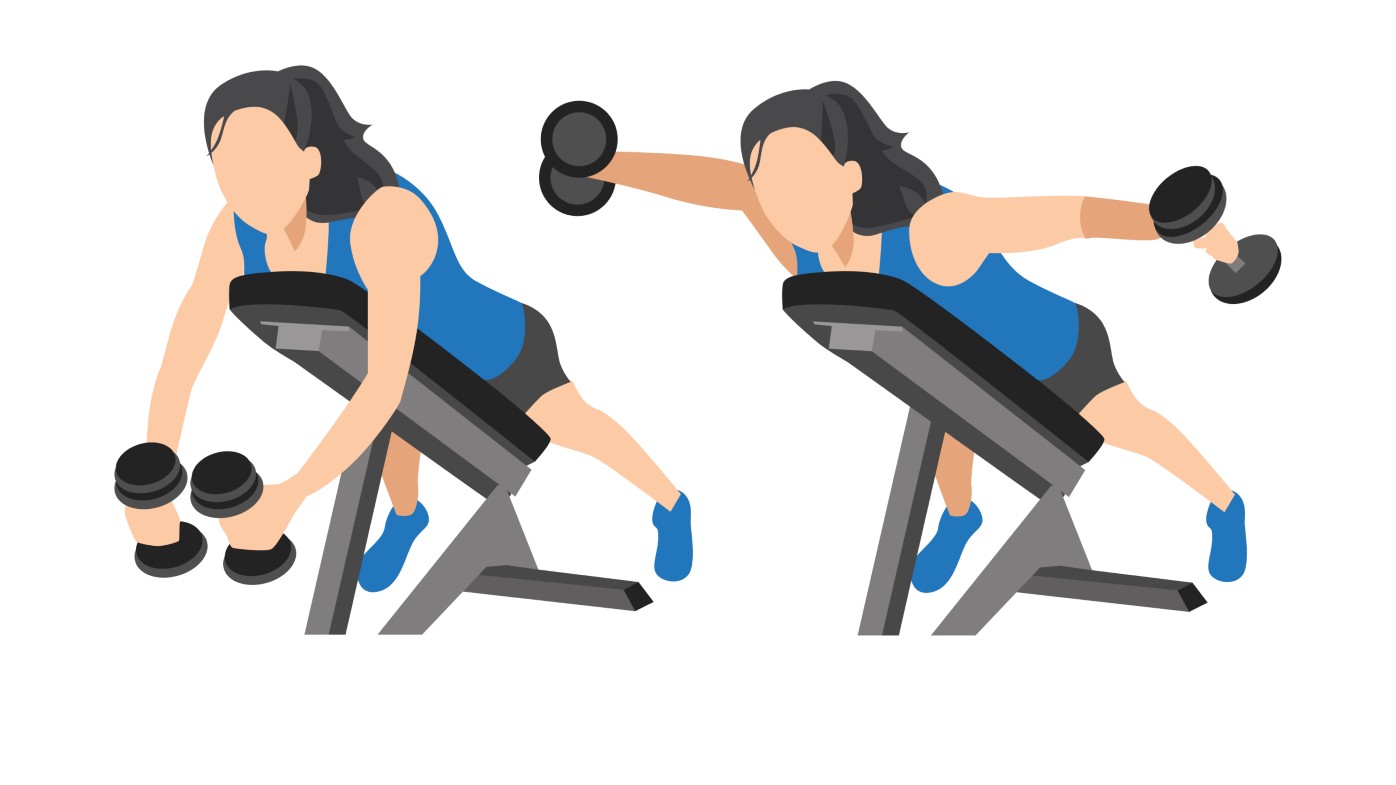
Using the same bench on the same setting, you can target your rear delts and rhomboids. Strengthening these upper back muscles helps support your shoulders and improve posture, targeting muscles responsible for rotation and retraction, drawing the shoulders back and down.
How:
- Sit on a bench on a 45-degree incline with your chest resting against the back
- Your chin should sit over the bench, so either position your feet on either side of the bench on the ground or kneel on the bench instead, with your thighs and chest resting on the bench
- Hold a dumbbell in each hand and allow your arms to hang on either side of the bench. Turn your palms to face each other (neutral grip)
- Brace your stomach and look ahead
- Softly bend the elbows. While maintaining your arm position, draw your shoulder blades together and send the weights out to the sides and slightly back
- Pause, then return to the starting position
- 3-4 sets of 8-12 reps.
4. Eccentric dumbbell biceps curl
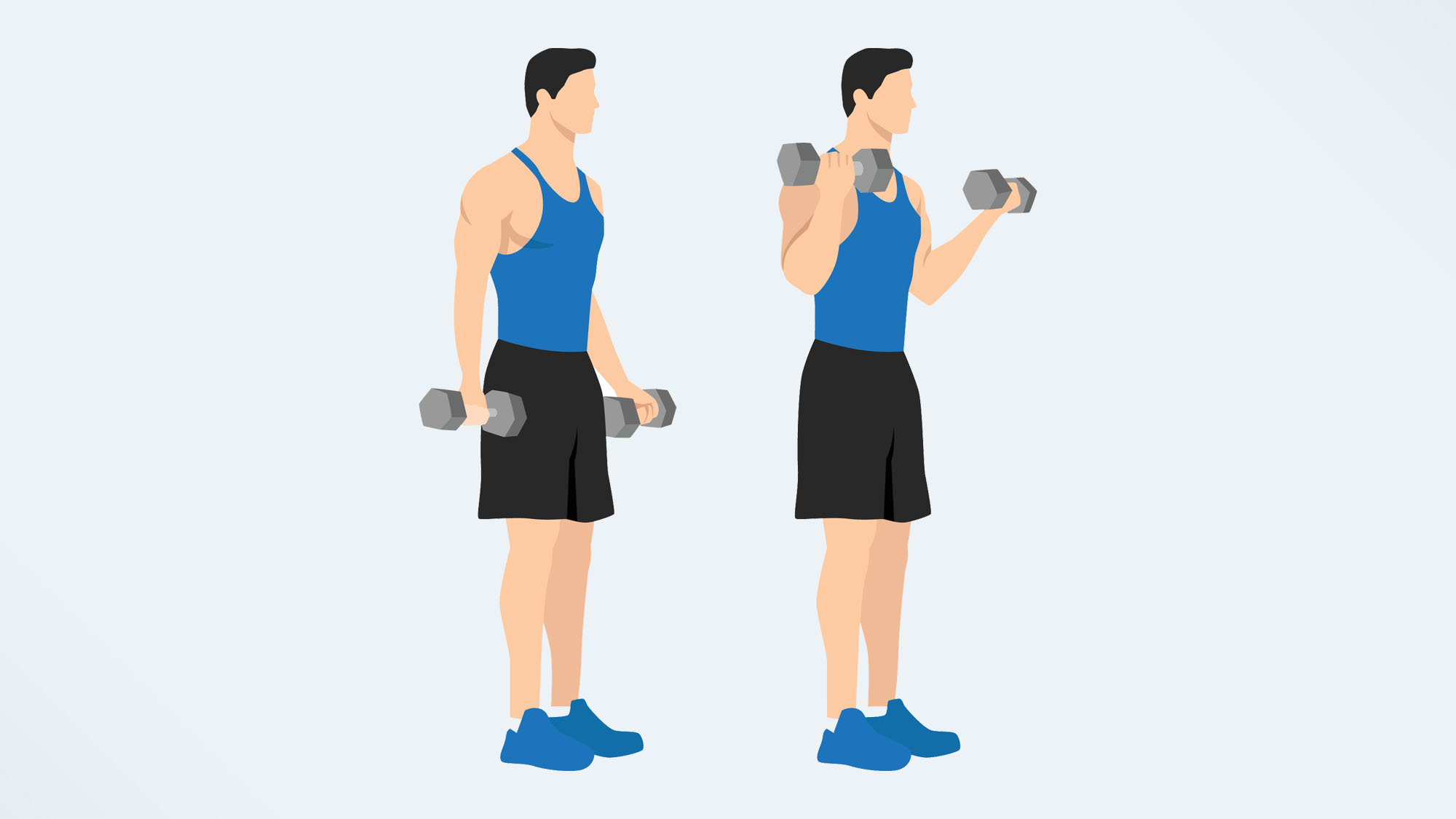
Eccentric loading, which means the muscle lengthens under load, has been shown to increase the strength of your muscles. In this case, we slow down the lowering phase of the curl to spotlight the negative part of the rep; this increases time under tension, and it’s popularly used during rehabilitation.
Here’s how to perform a biceps curl:
- Stand with your feet hip or shoulder-width apart and hold a dumbbell in each hand
- Turn your palms to face upward using a supine grip
- Set your shoulders back and down and stand tall, engaging your stomach and creating a solid torso position
- Draw the weights toward your shoulders, initiating the curling motion
- Pause, then slowly lower the weights using a 4-5 second tempo. Avoid swinging your weights
- 3-4 sets of 8-12 reps.
5. Dumbbell W raises
W raises can be done lying on your stomach as a bodyweight exercise. The dumbbell variation strengthens the back, particularly the upper and mid back, including the upper and middle trapezius and the posterior deltoids. The move also works the rotator cuff muscles (shoulder stabilizers), and the slightly bent forward position of your torso means you’ll also, to a lesser degree, activate your hips, lower back, core and glutes.
How:
- Stand holding a dumbbell in each hand, then slightly hinge forward at the hips and send your bum backward
- Engage your stomach and keep your back flat without hunching
- Bend your elbows to 90 degrees, then draw your arms up and back to create a W-shape with your body
- Squeeze the shoulder blades together and think about your shoulders externally rotating
- Pause, then return to the starting position
- 3-4 sets of 8-12 reps.
Verdict
If you’re unsure how to tell the difference between strength training and exercising to build muscle, we recommend checking out the differences between hypertrophy versus strength training. The helpful guide will help you program weight ranges, sets, reps, rest periods and frequency to help your body tap into both principles.
It’s highly unlikely that you’ll develop maximal strength using dumbbells, so if you plan to use these moves to build muscle, we recommend following the given rep ranges above. Hypertrophy (muscle building) favors higher reps than strength training at a lighter load than your maximum ability to shift weight. We recommend training several times per week using a diverse but consistent mix of weightlifting exercises that target different muscle groups.
Totally lost with what weights to use? If you’re not following a training program, aim for a weight that keeps your form tip top but the last few reps feel tough to finish. As we already mentioned, try to save your isolation exercise (the biceps curls) until last, so you can train your back at a greater intensity and finish by fatiguing those smaller muscle groups.
More from Tom's Guide
- I did 70 single-leg commando planks every day for one week — here's what happened
- I'm a personal trainer and this is one of the best compound exercises for strengthening your back
- Forget push-ups — this 15-minute arm workout builds your triceps, pecs and shoulders in 15 moves

Sam Hopes is a level 3 qualified trainer, a level 2 Reiki practitioner and fitness editor at Tom's Guide. She is also currently undertaking her Yoga For Athletes training course.
Sam has written for various fitness brands and websites over the years and has experience across brands at Future, such as Live Science, Fit&Well, Coach, and T3.
Having coached at fitness studios like F45 and Virgin Active and personal trained, Sam now primarily teaches outdoor bootcamps, bodyweight, calisthenics and kettlebells.
She also coaches mobility and flexibility classes several times a week and believes that true strength comes from a holistic approach to training your body.
Sam has completed two mixed doubles Hyrox competitions in London and the Netherlands and finished her first doubles attempt in 1:11.




